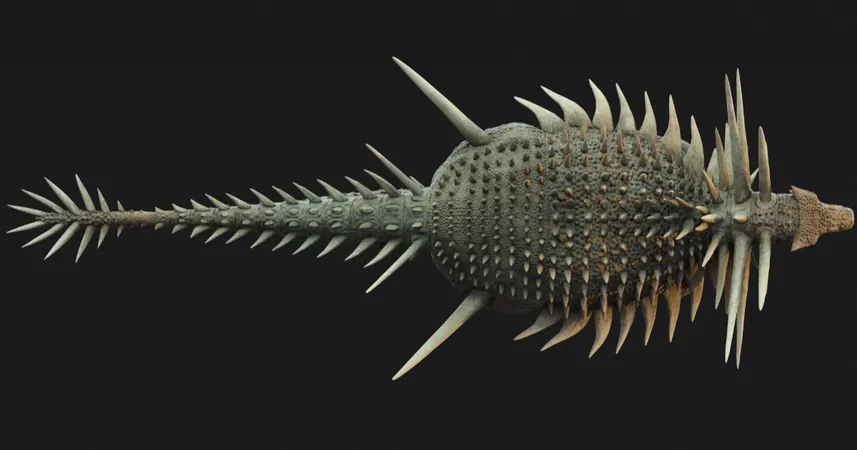
Unveiling Ancient Beliefs: Romans Used Fossils as Amulets!
2025-07-28
Author: Yu
Discoveries from a Roman Settlement in Spain
In a fascinating archaeological find at the Roman settlement of A Cibdá de Armea in northwestern Spain, experts have unearthed evidence that the ancient Romans adorned their amulets with the fossils of extinct marine arthropods, such as trilobites. This discovery suggests that these remarkable specimens were believed to possess magical or protective qualities.
A Rare Find: The First Roman Trilobite Fossil
Dating back to between the 1st and 3rd centuries CE, the trilobite fossil found stands out for multiple reasons: it is the first confirmed case from Roman times, making it a treasure among only three known fossils deliberately collected and utilized by humans over a millennium ago. Remarkably, it's just the eleventh trilobite to be discovered in an archaeological context.
Intentional Craftsmanship Revealed
Research from the Archaeological and Anthropological Sciences highlights that the fossil bore distinct signs of human modification, hinting at its intended use as jewelry, perhaps as a pendant or bracelet. Its unique taphonomic features suggest it was preserved as a natural cast, mineralized with iron oxide, giving it a striking reddish appearance—evidence of intense weathering similar to findings from the southern Central Iberian Zone, nearly 430 kilometers away. This indicates that the Romans likely transported the fossil intentionally.
Connection to Augustus: The Fossil Enthusiast
Intriguingly, this trilobite was unearthed alongside a bronze coin of Emperor Augustus. Historical accounts reveal Augustus’s passion for fossils, as chronicled by the historian Suetonius. He was known not only to import fossils from Greece but also to excavate them on Capri, where he established one of the earliest known paleontological museums at his villa, showcasing the bones of ancient giants and creatures.
Expert Analysis: Identifying the Trilobite
Researchers have identified the trilobite as Colpocoryphe sp. based on its segmented exoskeleton and specific anatomical features. Although no holes were found to indicate how it might have been worn as jewelry, the absence of perforations leads to speculation that it could have been set in crimp or mounted within precious metals like gold or silver.
Insights into Ancient Life
Microscopic examinations and high-contrast photography revealed human-made alterations, including seven artificial facets designed to flatten the specimen for decorative use. This remarkable study illustrates how a single artifact can serve as a powerful glimpse into the beliefs and daily lives of ancient civilizations, highlighting how the fascination with fossils transcended time.



 Brasil (PT)
Brasil (PT)
 Canada (EN)
Canada (EN)
 Chile (ES)
Chile (ES)
 Česko (CS)
Česko (CS)
 대한민국 (KO)
대한민국 (KO)
 España (ES)
España (ES)
 France (FR)
France (FR)
 Hong Kong (EN)
Hong Kong (EN)
 Italia (IT)
Italia (IT)
 日本 (JA)
日本 (JA)
 Magyarország (HU)
Magyarország (HU)
 Norge (NO)
Norge (NO)
 Polska (PL)
Polska (PL)
 Schweiz (DE)
Schweiz (DE)
 Singapore (EN)
Singapore (EN)
 Sverige (SV)
Sverige (SV)
 Suomi (FI)
Suomi (FI)
 Türkiye (TR)
Türkiye (TR)
 الإمارات العربية المتحدة (AR)
الإمارات العربية المتحدة (AR)